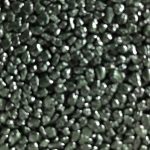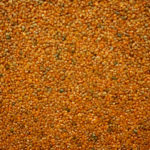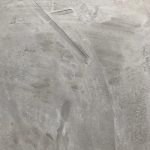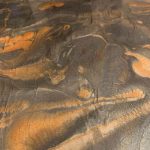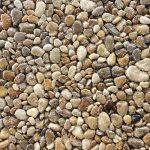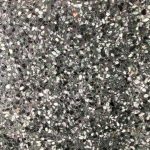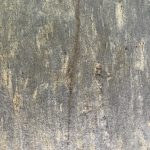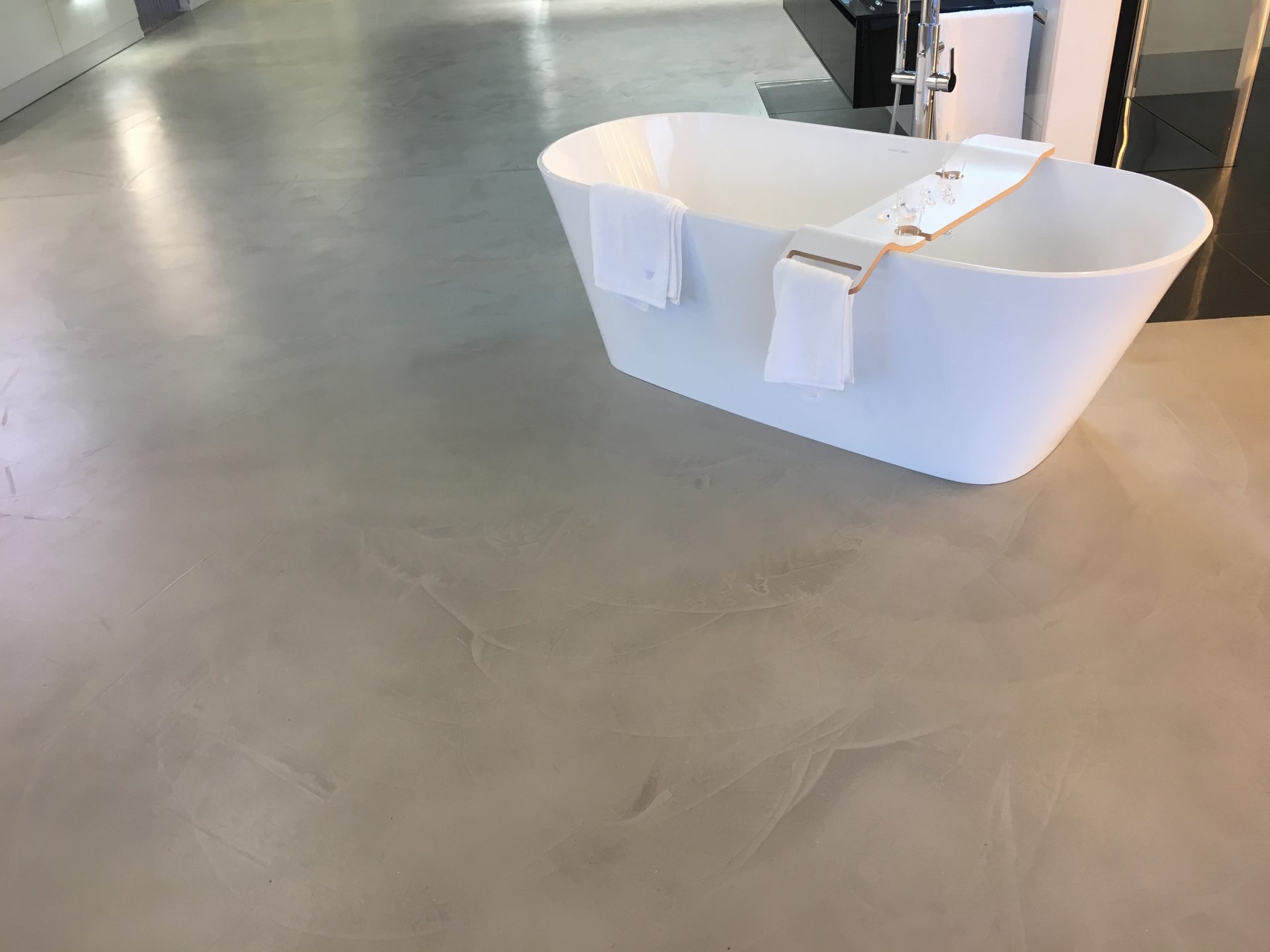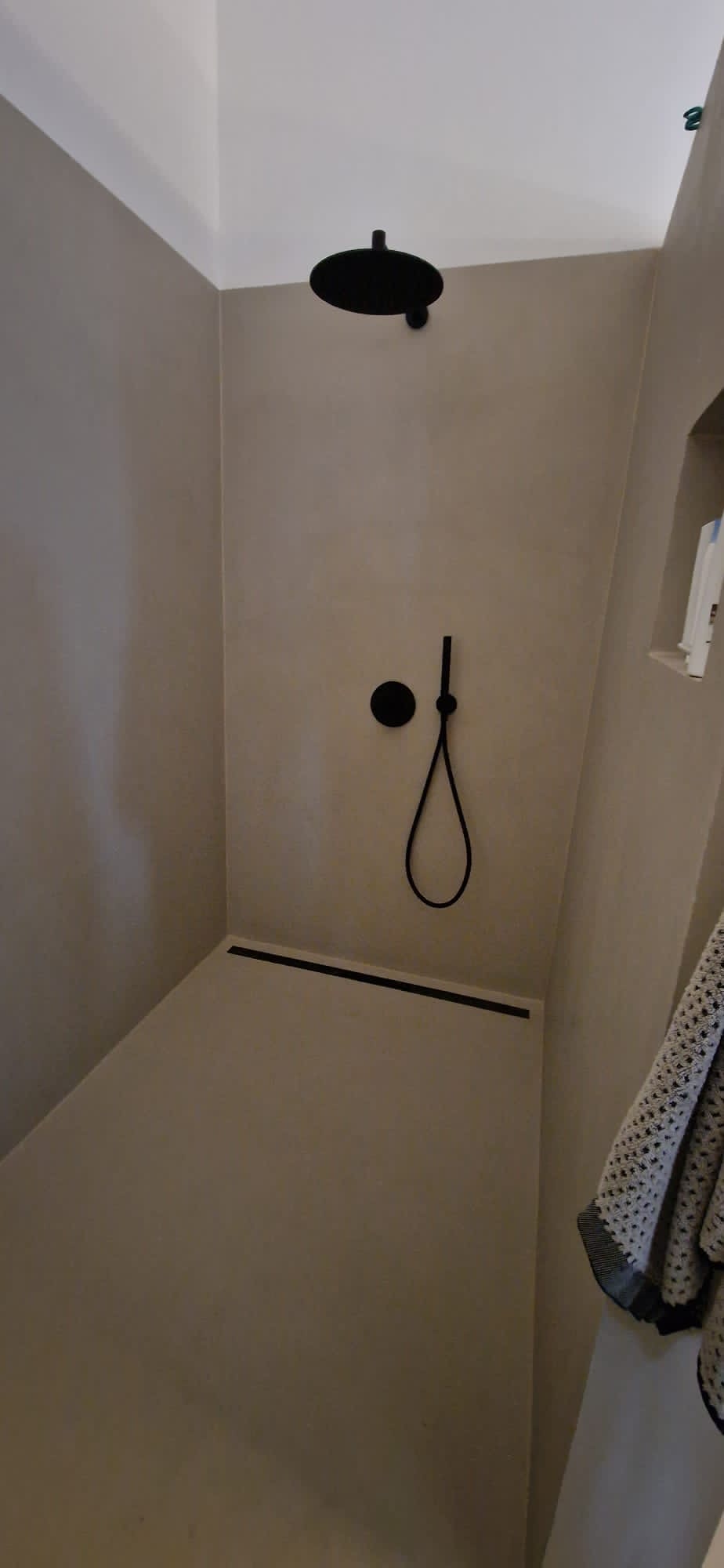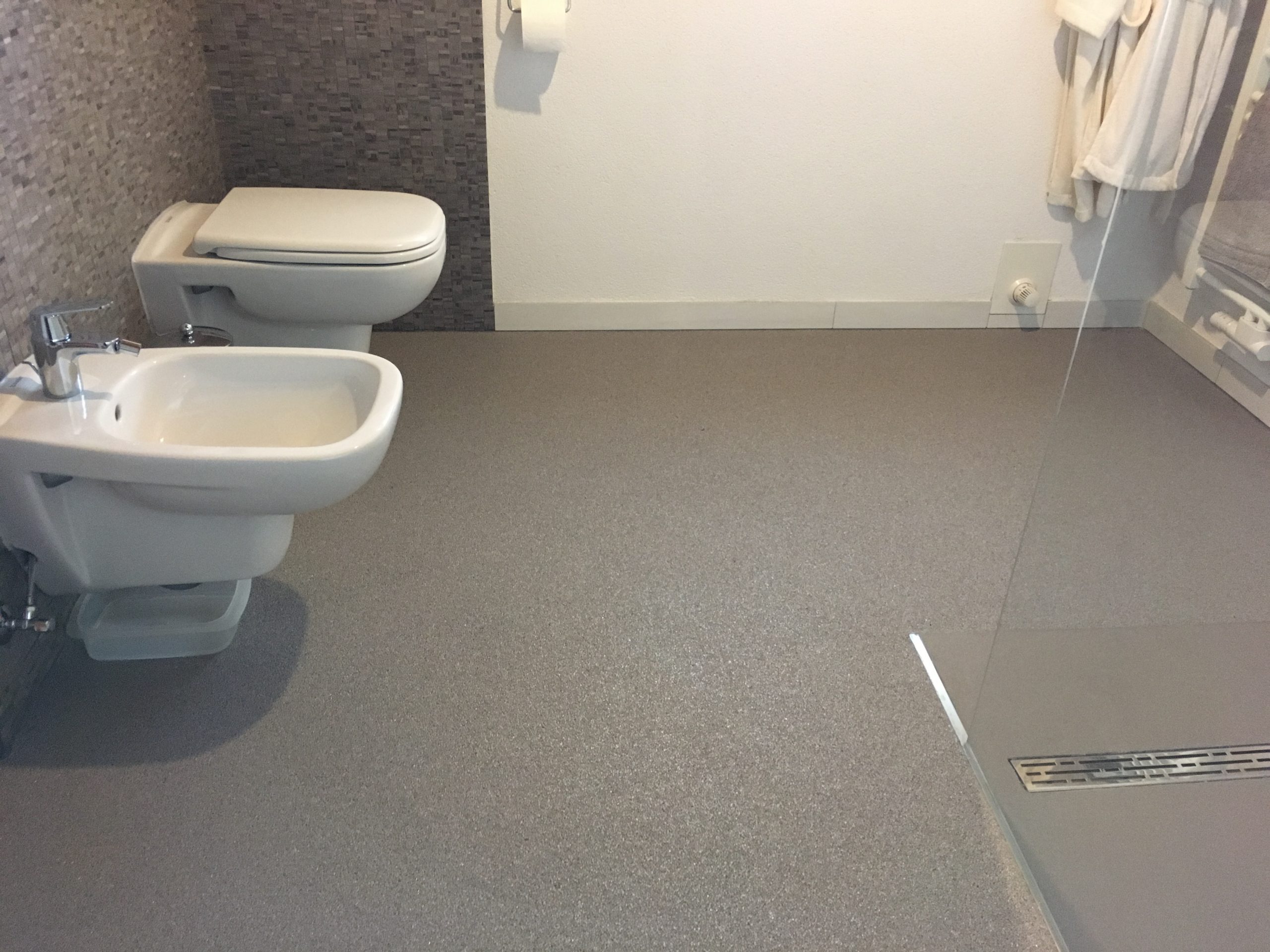Renovate your living room with stone carpet? We think so: That’s a good decision! Its many positive properties make it the first choice for children’s rooms too. You can find out what these properties are, how the gravel floor shows its strengths in the many different areas of application and why it is an experience for the whole family in our “Things to know” section.
Contents
- Transform living rooms into something special with high-quality marble stone carpeting
- Stone carpet – A warm decorative floor supported by underfloor heating
- Renovate living rooms, children’s rooms, teenagers’ rooms and guest rooms with stone carpeting
- Non-binding Cost estimate
- Link collection
- FAQ
- Shop
Do you already know where you would like to install a stone carpet? Do you need help planning your living room? Then contact Quarzkiesboden Zimmermann directly and find installers in your area!
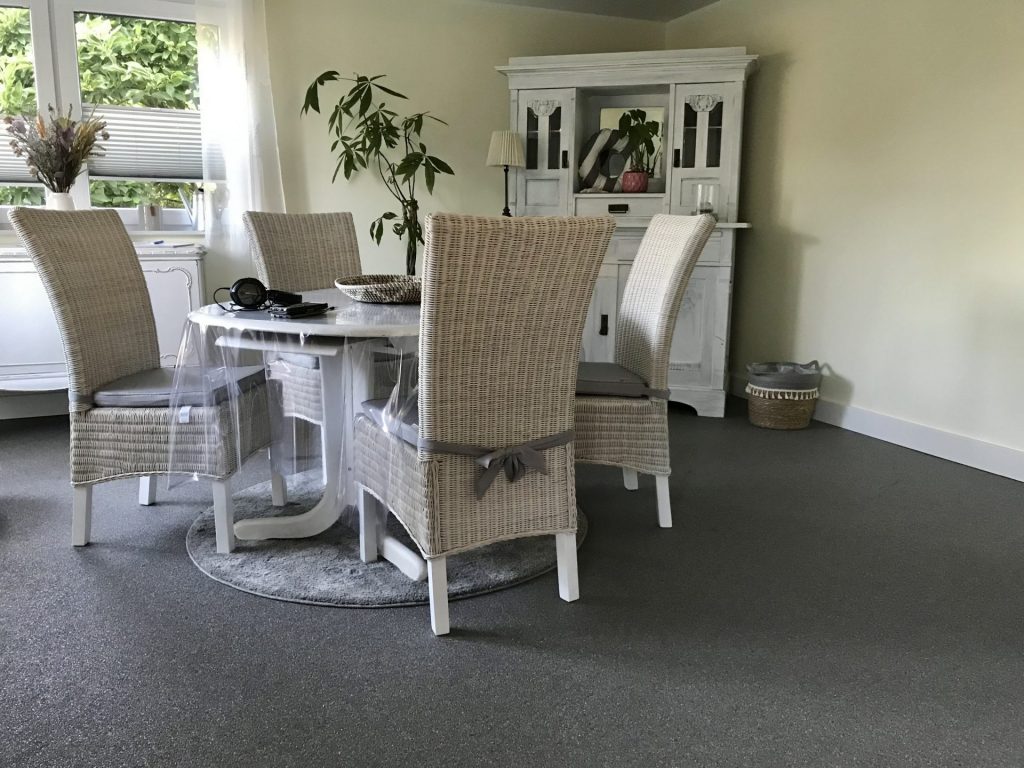
Transform your living room into something special with high-quality marble stone carpet Personalize your floor thanks to a choice of colours and airbrush motifs
Transforming living spaces into elegant rooms is no problem at all with a high-quality marble stone carpet. The matching baseboards—also made of marble gravel—make the dream home perfect.
In addition to the various types of marble, you also have the option of choosing from a wide range of colored quartz to suit your personal design style. This expands the selection far beyond the range of natural stone colors: colored gravel with a metallic effect to match metal living room furniture, or bold blue and turquoise tones to bring a seaside feeling right into your living room—there is a colored quartz to suit every idea!
With a wide variety of creations made using various techniques and unusual materials, there are virtually no limits to what you can do. It’s up to you whether you opt for a unique, unusual piece or a simple, classic design in a solid color.
Personalize your dream floor with a stone carpet logo. Read about the use of airbrush technology, i.e. Qubo® Painting, in the interesting article by sz art of airbrush.
Qubo® Paintings can be used not only in the living room and living areas in general, but also in the entire interior
, both commercially and privately. They can even be used in the
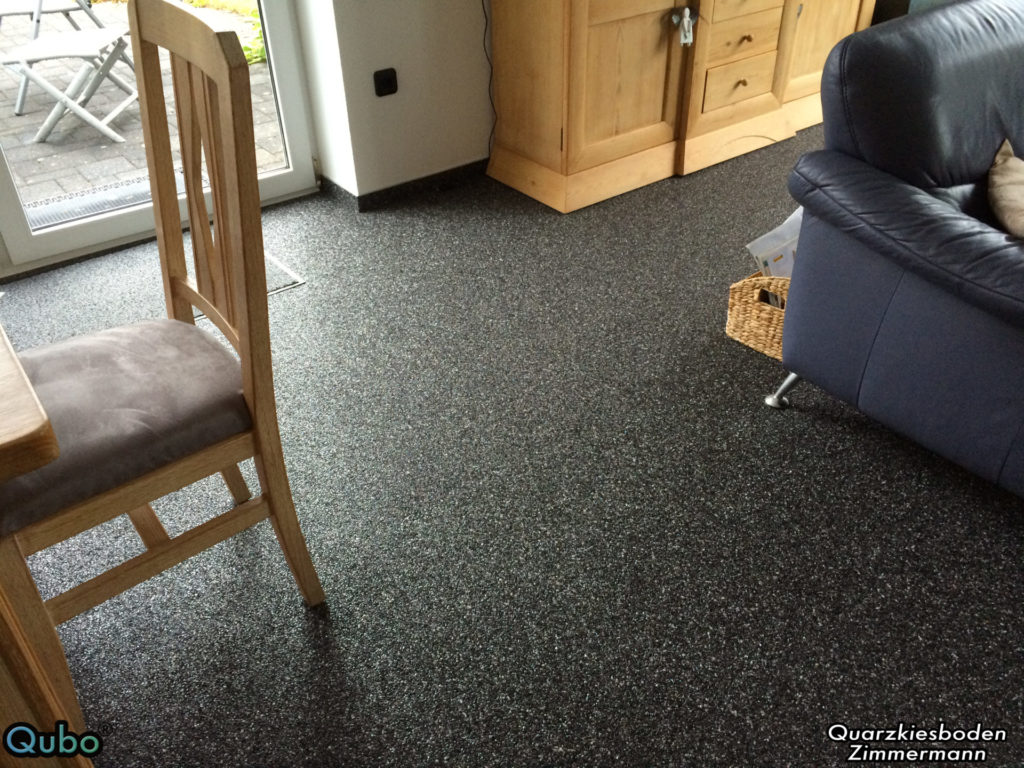

A warm decorative floor supported by underfloor heating Stone carpet - not a cold stone floor
Most people think of a cold floor covering when they hear the word stone flooring and wonder how this fits in with a living room. But if you are talking about a stone carpet, you are mistaken. This special flooring consists of many small pebbles. When such a decorative floor is laid, a large number of small air chambers are created. Due to the insulating effect of the air chambers in the structure of the gravel floor, the surface is warmed by the room temperature. Thanks to the warm appearance created by the seamless, textured surface, the pebble floor looks like a cozy living room carpet.
We can therefore say that a stone carpet is already a naturally warm decorative floor. In combination with underfloor heating, this effect can be further enhanced. Due to the gravel layer of just a few millimeters high (6 mm), this floor covering heats up faster than a much thicker tiled floor, for example. At the same time, the granular structure of the granulate flooring ensures a considerably larger surface area than with smooth floor coverings. This allows the heat to be released into the room air more quickly.
Incidentally, underfloor heating systems are very easy to retrofit nowadays. To do this, the recesses for the heating loops are milled into the solid subfloor. Once the heating has been installed, the new top floor follows immediately. More details on retrofitting underfloor heating can be found in our article on the topic “Milling underfloor heating”.
Renovating living rooms, children's rooms, teenagers' rooms and guest rooms with stone carpet Should you lay a gravel floor in the children's room?
Definitely! When we were building a new house, we opted for an exclusive
We weren’t quite sure about the children’s rooms at first. We thought it would be a bit too hard when the little ones were playing on the floor and initially considered an alternative. But the little ones proved us wrong, because they already knew exactly what they wanted. After all, they also wanted to have a say in the selection of the small stones and also have an ornament laid. After all, it was their living room!
We have never regretted this decision. After all, it was a cost-saving measure. When the children were still small, we used street carpets and the like to play on. When they reached adolescence and the children’s rooms became teenagers’ rooms, we simply removed the carpet runners. As the gravel floors are indestructible and still look as good as new today, we were able to save on renovation costs later on. Even after all these years, the stone carpet still provides us with…
… for a strong appearance!
Non-binding cost estimate and advice
First and foremost, the area of application determines the pricing. However, the costs depend on many different factors, including
- the type of binder required
-
from the primer
-
the choice of skirting boards, for example, if these are also made of gravel
-
from the labor costs of the professional installer
-
the size of the area to be laid
In outdoor areas, the costs are higher because the substrate needs to be sealed and the marble gravel needs to be laid with a UV-resistant binder.
In most cases,
coloured quartz
or
marble gravel
is used for the production of stone carpets. However, there are considerable differences in quality here, for example in the proportion of dust in the material or in the types of marble used. Mica additives and various precious and semi-precious stones can be added, but this is another cost factor.
Colored quartz is available in the following grain sizes:
-
1–2 mm
-
2–3 mm
- 3–4 mm
Marble gravel is available in the following grain sizes:
-
1–4 mm
-
4–8 mm
- 8–15 mm
Of course, the choice of gravel grain size has an effect on the laying thickness of the gravel floor.
The laying thickness of the floor depends on the gravel grain size and the area of application. Normal gravel with a grain size of 2 – 3 mm can be laid indoors with a thickness of 6 mm.
An installation thickness of 8 mm is used outdoors and on stairs indoors due to the load.
Finally, 10 mm of material is applied to external stairs.
Vertical surfaces such as risers, skirting boards and walls are always laid in 6 mm.
The larger the grain size of the gravel, the higher the installation height of the floor covering. This means that more gravel and additional binder is required per m². The price increases accordingly.
The primer forms the bonding bridge between the building structure and the gravel floor. The material can be applied to almost any substrate, for example tiles, wood, stone, concrete and metal. Different substrates require different preparation steps.
On tiles and metal, for example, a primer is required to give the smooth surface stability during installation.
On porous stone and absorbent screed, the appropriate primer must be used to prevent the binder from being absorbed, which is intended to ensure that the pebbles remain in place.
To coat wooden planks with a gravel floor, the movement of the planks against each other must first be stopped. To do this, the installer first applies a mesh mat to the wooden floor. Once the filler has dried, the gravel floor is applied.
For reasons of hygiene, the stone carpet should be fitted with a pore seal, especially in kitchens and
bathrooms
. It prevents leaked, sticky liquids from penetrating the gravel floor. While it is difficult to remove liquids that have penetrated an open floor, the pore seal enables
effortless cleaning
by wet mopping.
Dogs
, cats and co. feel much more comfortable on the textured surface of a gravel floor than on smooth floor coverings such as tiles or laminate, as they do not slip on stone carpets. However, it is advisable to cover the floor with a pore seal to ensure an easily wipeable surface.
terrace
is the durable alternative to other floor coverings. The system creates a non-slip floor that is not only visually appealing, but also 100% frost-proof and UV-resistant. This means that our
marble gravel
, which is also suitable for outdoor use, comes from Italian quarries and is naturally lightfast.
-
High drainage capacity due to open-pored structure
-
Quick drying in sun and wind
-
Easy to clean and self-cleaning
-
100% frostsicher
-
UV-stabil
- Gentle, massage-like walking comfort when walking barefoot
The most important thing when laying gravel floors in outdoor areas is preparing the substrate. This ensures the durability of the finished floor.
On the one hand, this is because a primed subfloor provides significantly increased adhesion for the filled gravel. On the other hand, a sealing layer keeps rainwater away from the building structure, for example, which supports long-term durability.
Options for sealing building structures are
- Sealing using an epoxy resin seal with sealing membrane
- Sealing using a flex sealing slurry
In order to drain rainwater effectively, the floor covering is laid with a gradient of at least 1.5%.
No, in outdoor areas, the stone carpet is always laid as an open system to ensure drainage capacity and thus the drainage of rainwater. This makes them 100% frost-proof and therefore ideal as
pool surrounds
and as a covering for balconies, terraces, entrance areas, outdoor steps and loggias.
We would like to point out that we do not recommend stone carpets in the direct shower area. The reasons for this can be found in the basic structure of the floor and the wet room. Just as the tile adhesive under a tile does not form a completely flat surface without air pockets, pores also remain underneath a sealed stone carpet.
If, after years, a silicone seam leaks and water from a fitting, for example, penetrates between the wall or floor covering and the seal of the building structure, the transparent pore seal reacts with the water and forms white stains. As these occur underneath the seal, they cannot be wiped away or removed by drying.
This is why insurance companies do not classify stone carpets as suitable for wet rooms and do not replace such coatings in the event of damage. We therefore recommend microcement coatings for showers. With these, there is no water-bearing layer between the floor covering and the substrate, so there is no risk of moisture penetration. Due to the many customization options for microcement, it can also be combined with stone carpeting. Just get in touch with us.
stairs
can be easily renovated both indoors and outdoors. If you apply a gravel coating to your old stairs, you will get a new design without having to invest in a new staircase. Renovation is carried out without any chiseling or demolition work. Staircase renovation significantly reduces or even completely eliminates noise. Of course, stone carpeting is also ideal for new staircases and entrance areas.
Yes. A staircase coated with stone carpet already has a slip resistance class of R10 after installation.
Special sealants can be used to increase the slip resistance class to R11 or R12.
Depending on the design of the staircase, the renovation takes 3-5 days. In special cases, installation is also possible within an even shorter time. For a more precise determination of the duration of your construction project ,
simply contact us at
.
All our gravel floors use natural stones as the base material. This is why many people also refer to stone carpeting as
natural stone carpeting
.
The gravel is available natural and colored.
FAQ
Details and facts, key figures and explanations – here you will find answers to frequently asked questions about our Qubo® coating systems. If any details remain unclear, simply contact us at . We will be happy to advise you personally and promptly.

